When it comes to repainting my home, finding the right paint can be both a blessing and a struggle. With so many brands on the market, I’ve tried my share of options, but I finally landed on Glidden paint for my most recent project.
In this article, I’ll take you through my personal experience using Glidden Premium eggshell interior paint and share detailed insights about its performance, pros, cons, and how it compares to other brands.
So if you’re on the fence about choosing the right paint for your home, I hope my experience helps guide your decision.
Why I Chose Glidden Paint?
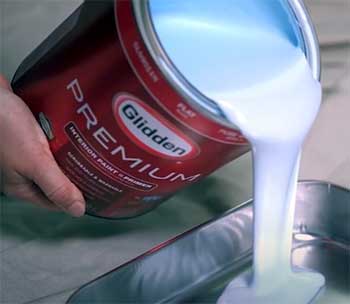
Before I even cracked open a can of Glidden, I did what many of you might be doing right now—searching for reliable reviews and affordable options.
My go-to store for paint is Home Depot, and I was drawn to Glidden because of its price point.
With Glidden Premium eggshell interior paint, I was promised a zero VOC, low-odor formula with built-in primer and a thick, easy-to-apply consistency.
Not to mention, the mildew-resistant coating was particularly appealing since I was painting in a room prone to moisture.
- Where To Buy Glidden Paint?
If you’re ready to give Glidden a shot, the easiest place to find it is Home Depot, both online and in-store. They carry a range of Glidden products, from Premium to Essentials, so you’ll find something that fits your project needs.
I ordered mine online for in-store pickup, which was a seamless experience.
My Painting Experience With Glidden Paint
- Coverage and Application
One of the first things I noticed was that Glidden Premium eggshell paint claims to cover in one coat. Now, I’m no stranger to paint that makes this claim, only to fall short. In my case, the coverage was decent but not perfect.
While I was covering light-colored walls, I still found that two coats were necessary for the uniformity I was after. If you’re working with darker colors or more textured surfaces, don’t be surprised if you need an extra coat.
However, I was impressed with how easy it was to apply. The consistency of the paint is just right—not too thick, not too runny—and I found it worked well with both a roller and a brush. Clean-up was also a breeze; all I needed was soap and water, and everything looked as good as new.
- Color Matching Challenges
While I loved the color options available from Glidden—with over 1,100 tints to choose from—I did run into an issue when I tried to match a color from a previous project. The color came out a few shades darker than I expected, which was frustrating.
If you’re planning a repaint or touching up previous work, be prepared for slight variations in shade, especially when buying multiple cans from different batches.
Pros of Glidden Paint
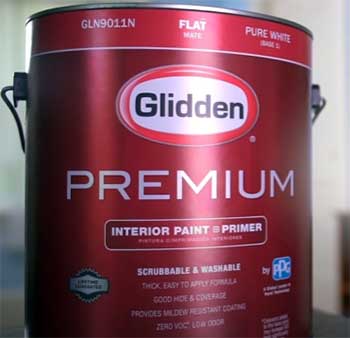
- Affordability: One of the biggest pros is how budget-friendly Glidden Premium is compared to other brands. For the quality you get, it’s hard to beat the price.
- Easy Application: Whether you’re a novice or an experienced painter, Glidden’s consistency makes it easy to work with.
- Low Odor and VOC: If you’re sensitive to strong paint smells, you’ll appreciate how low-odor this paint is. Plus, it’s zero VOC, meaning fewer harmful chemicals in the air.
- Mildew Resistant: This is particularly beneficial for bathrooms, basements, or any other room where moisture can be a problem.
- Scrubbable and Washable: I found the painted surfaces to be quite durable. After a few weeks, I tested how well it would hold up to a quick scrub, and it did not disappoint. If you have kids or pets, this feature is a game-changer.
- Availability: Since it’s a widely available brand, you won’t have trouble finding Glidden paint at Home Depot or other local hardware stores.
Cons of Glidden Paint
- Requires Multiple Coats: Despite the claim that one coat would do the job, I needed two for full coverage, especially on darker areas.
- Inconsistent Color Matching: If you need to color match, make sure you test it first because the shades may not be exact.
- Not Ideal for High-End Projects: While Glidden does a great job for standard home projects, it may not be the first choice for high-end or professional-quality results.
Maintenance Tips For Glidden Paint
Once you’ve got your walls looking fresh and new, you’ll want to make sure they stay that way. Here are some maintenance tips based on my experience:
- Scrubbing and Cleaning: Because Glidden Premium is scrub-resistant, you can easily clean off smudges, fingerprints, or other marks with a damp cloth. Just avoid using abrasive cleaners, as they could wear down the paint over time.
- Touch-Ups: Always keep a small amount of paint for touch-ups. Since I noticed some inconsistency in color matching, I recommend storing the original can with the color code for future reference.
- Ventilation: Even though this is a low-odor and zero VOC paint, it’s always a good idea to keep the room well-ventilated when applying. This ensures the paint dries smoothly and minimizes any lingering smells.
- Avoid Excess Moisture: While Glidden paint has a mildew-resistant formula, I still try to avoid excessive moisture in the room. Running a dehumidifier or ensuring proper ventilation will prolong the life of your paint, especially in bathrooms or kitchens.
Comparison With Other Paint Brands
You might be wondering how Glidden compares to some of the bigger names in the paint industry, like Behr, Sherwin-Williams, and Benjamin Moore. Here’s how I think Glidden stacks up:
- Behr
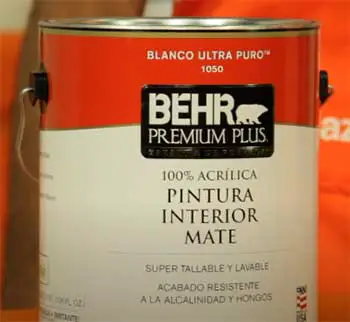
Behr is another paint you’ll often find at Home Depot, and it’s generally regarded as a more premium product compared to Glidden.
I’ve used Behr for various projects, and while it does offer slightly better coverage than Glidden—particularly in terms of one-coat applications—its price tag reflects that.
Behr paints tend to be thicker and might give you a smoother finish faster, but for basic household painting, the cost difference may not be worth it unless you’re aiming for a high-end look.
In terms of cleanability and durability, Glidden holds up fairly well against Behr, especially in spaces that don’t see heavy wear and tear.
- Sherwin-Williams
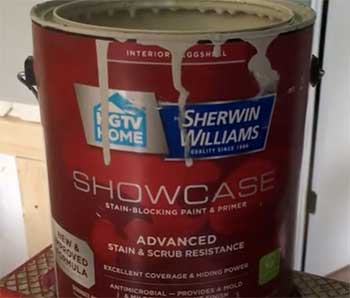
Sherwin-Williams is highly favored by professional painters for its consistent results and wide range of finishes.
However, I’ve found Sherwin-Williams to be much more expensive, and in my experience, the performance difference isn’t as significant as the price might suggest.
If you need a paint that’s designed for commercial or professional-grade projects, then Sherwin-Williams is a solid option.
For everyday use in the home, though, Glidden’s ease of use and affordability make it a more practical choice.
I also encountered some color-matching issues with Sherwin-Williams, similar to what I faced with Glidden, so paying extra doesn’t necessarily mean better color consistency.
- Benjamin Moore
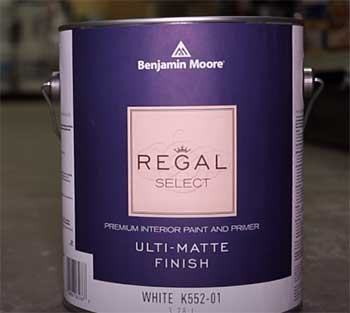
Benjamin Moore is often considered the gold standard in the paint world, and there’s a reason for that.
Its high-end formulations provide excellent coverage and a luxurious finish.
When I’ve used Benjamin Moore paints, I noticed that they tend to require fewer coats and offer a more flawless look.
However, this premium performance comes with a much higher cost.
If you’re painting a space where perfect finish and long-term durability are key—like a living room or an entryway—Benjamin Moore might be worth the splurge. But for rooms where you don’t need a designer finish, Glidden offers more than adequate performance at a fraction of the cost.
Summary of Comparisons
- Glidden vs. Behr: Behr offers slightly better coverage but comes at a higher price point. Glidden is better for budget-conscious projects where affordability is key.
- Glidden vs. Sherwin-Williams: Sherwin-Williams is excellent for professional-grade results but may not justify the extra cost for average home projects. Glidden provides solid results at a much lower price.
- Glidden vs. Benjamin Moore: Benjamin Moore is top-tier in terms of coverage and finish but is much more expensive. Glidden is a great alternative for standard projects where cost-efficiency matters more than high-end aesthetics.
In the end, Glidden strikes a balance between affordability and performance, making it a fantastic option for everyday projects, especially for homeowners like myself who are focused on getting a decent finish without overspending.
Frequently Asked Questions (FAQ)
From my experience, I’d say Glidden is a high-quality paint for the price. It’s not the absolute best in the market, but it holds up well, especially if you’re looking for a cost-effective solution.
Benjamin Moore and Sherwin-Williams often top the lists for the best overall paint. However, if you’re balancing quality with affordability, Glidden is a fantastic option.
With proper maintenance, Glidden paint can last up to 10 years. Make sure to clean the walls occasionally and avoid exposing the paint to excessive moisture for the best longevity.
Yes, Glidden is a brand under PPG Industries, a global supplier of paints, coatings, and specialty materials.
Conclusion: Is Glidden The Right Paint For You?
So, would I recommend Glidden paint? Absolutely, if you’re looking for an affordable, durable, and easy-to-apply paint for your home. It’s perfect for DIY projects or even professional jobs where the budget is a concern.
Glidden offers a balance between price and performance, making it a solid choice for most homeowners.
If you’re repainting a room like I did, or tackling a larger project, you’ll be pleased with the result—just remember to be patient with the drying and touch-up process.
For more complicated projects or for color precision, you might want to consider higher-end brands like Benjamin Moore, but for the majority of us, Glidden delivers on quality without the hefty price tag.
You can easily find Glidden at Home Depot, which is where I purchased mine, or order it online for home delivery.
